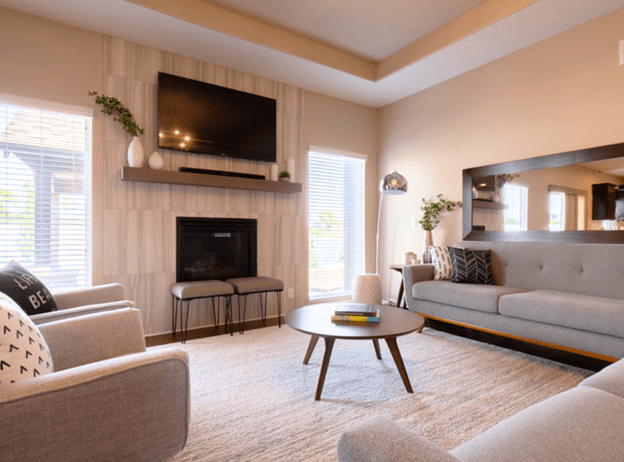
Elevate Your Living Room with Transitional Design | A Perfect Blend for Florida Homes
Are you looking to transform your living room into a space that seamlessly combines classic elegance with modern functionality? Look no further than transitional interior design for your living room. This versatile style is perfect for Florida homes, where the blend of indoor and outdoor living is essential. In this blog, we’ll explore how you can achieve a transitional design that brings harmony and sophistication to your living room.
What is Transitional Design?
Transitional design marries the best elements of traditional and contemporary styles. It’s all about balance – mixing the old with the new, the luxurious with the functional, and the intricate with the streamlined. The result is a timeless space that feels both cozy and current, making it ideal for the dynamic lifestyle of Floridians.
Key Elements of Transitional Design
-
Neutral Color Palette
Start with a foundation of neutral colors such as whites, grays, and beiges. These colors create a calming backdrop that can be easily accented with bolder hues. In Florida, where natural light is abundant, a neutral palette helps to reflect sunlight, keeping the space bright and airy.
-
Comfortable Furniture
Choose furniture pieces that combine clean lines with plush comfort. Think of a sleek sofa with soft cushions or a traditional armchair upholstered in a modern fabric. The idea is to create a space that is both inviting and stylish.
-
Natural Materials
Incorporate natural materials like wood, stone, and glass to add texture and warmth to your living room. In Florida, where the natural landscape is a significant part of daily life, using materials that reflect the outdoors can create a seamless transition from inside to outside.
-
Layered Textures
Mix and match different textures to add depth to your design. Pair a smooth leather couch with a chunky knit throw, or a sleek metal coffee table with a soft, patterned rug. These layers create visual interest and a cozy atmosphere.
-
Balanced Accessories
Keep accessories to a minimum, but make sure they have a big impact. Choose a few statement pieces like an oversized mirror, a piece of abstract art, or a set of elegant vases. These items should complement the overall design without overwhelming it.
Bringing Transitional Design to Your Florida Living Room
1. Maximize Natural Light
Florida homes are blessed with plenty of sunshine, so make the most of it. Use sheer curtains to allow light to filter in while maintaining privacy. Position mirrors strategically to reflect light and make the room feel larger.
2. Indoor-Outdoor Flow
Embrace the Florida lifestyle by creating a seamless flow between your indoor and outdoor spaces. Large sliding doors or French doors can open your living room to a patio or garden, allowing for easy movement and a continuous design theme.
3. Coastal Touches
Add subtle coastal touches to your transitional interior design. This doesn’t mean turning your home into a beach house, but incorporating elements like driftwood accents, nautical stripes, or sea glass decor can bring a bit of the beach inside without going overboard.
4. Climate-Appropriate Fabrics
Choose fabrics that are suitable for Florida’s warm climate. Lightweight, breathable materials like linen and cotton are perfect for upholstery and drapery. These fabrics keep your living room cool and comfortable year-round.
Today’s Takeaway
Transitional design offers the perfect solution for those who want a stylish, comfortable living room that fits the Florida lifestyle. By combining traditional and contemporary elements, you can create a space that feels timeless yet modern, luxurious yet practical. Ready to transform your living room with transitional interior design?
Contact me, Marilou Stones, for a personalized consultation. Visit www.stonesdesignsllc.com and fill in our inquiry form today. Let’s create a living room that’s perfect for you!

